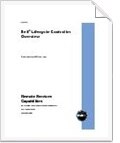This guide providies a high-level technical description of the Dell™ Lifecycle Controller firmware versions 1.2 and 1.3, and can be used to simplify OS deployment, automate the setup and configuration of new server platforms, simplify server part replacement, firmware inventory and updates.
Lifecycle Controller 1.2 and 1.3 offer unprecedented capabilities for remotely deploying and managing your Dell PowerEdge™ server platform. Building on Lifecycle Controller version 1.0 and 1.1 capabilities introduced with the 11th Generation PowerEdge Servers, the 1.2 and 1.3 versions leverages the embedded OS drivers and the Integrated Dell Remote Access Controller (iDRAC) service processor to address several common pain points associated with platform provisioning and deployment. The focus of the Lifecycle Controller 1.2 and 1.3 has been the Auto-Discovery capability, the ability to boot ISO images from network shares, remotely controlled acquisition of and local exposure of OS drivers that come embedded on the platform, remote firmware inventory and updates, simplifying part replacement and innovative staging of OS Deployment images on vFlash SD card.
Lifecycle Controller simplifies end-to-end server lifecycle management by:
- Provisioning — Entire pre-OS configuration from a unified interface
- Deployment — Simplifies OS installation with drivers resident on the Lifecycle Controller
- Patching/Updates — OS agnostic and minimizes the maintenance downtime with direct access to updates on the Dell support site. It simplifies BIOS and firmware updates by maintaining a working version for rollback purpose
- Servicing — Availability of diagnostics 24/7 without hard drive dependency. Capability to flash firmware automatically when replacing field replaceable components such as a PowerEdge RAID controller, NIC or power supply
- User customization — Bootable and managed 256 MB persistent storage for logs, service images, crash dumps, and so on
Also included in this guide is a description of the architecture of the Lifecycle Controller, the Web service interface and descriptions of how to remotely utilize the embedded OS drivers.
